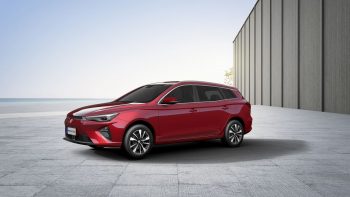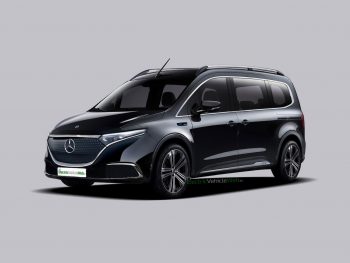While India awaits the launch of the electric-ready Force Motor T1N van, the European market will get a host of electric LCVs, primarily delivery vans, in the first wave of the 2020s. In this post we take a look at 8 models.
2021 Renault Kangoo Z.E.
The leader of the European van market, Renault, previewed the next-generation Kangoo electric last year with the Renault Kangoo Z.E. concept van. Since the launch of the Kangoo Z.E. in 2011, over 40,000 copies of it have been sold in the European market. The company has confirmed an investment of 450 million euros over 5 years into the MCA factory of Maubeuge, in the North of France, for the production of the new Kangoo in electric and thermal variants.
Nothing much is known about the specifications of the 2021 Kangoo electric, but the battery is expected to be a big step-up from the 31 kWh unit of the current version. Expect the driving range to improve to about 250 km (real-world conditions) with a circa 50 kWh battery.
Citroen e-Jumpy/Citroen e-Dispatch
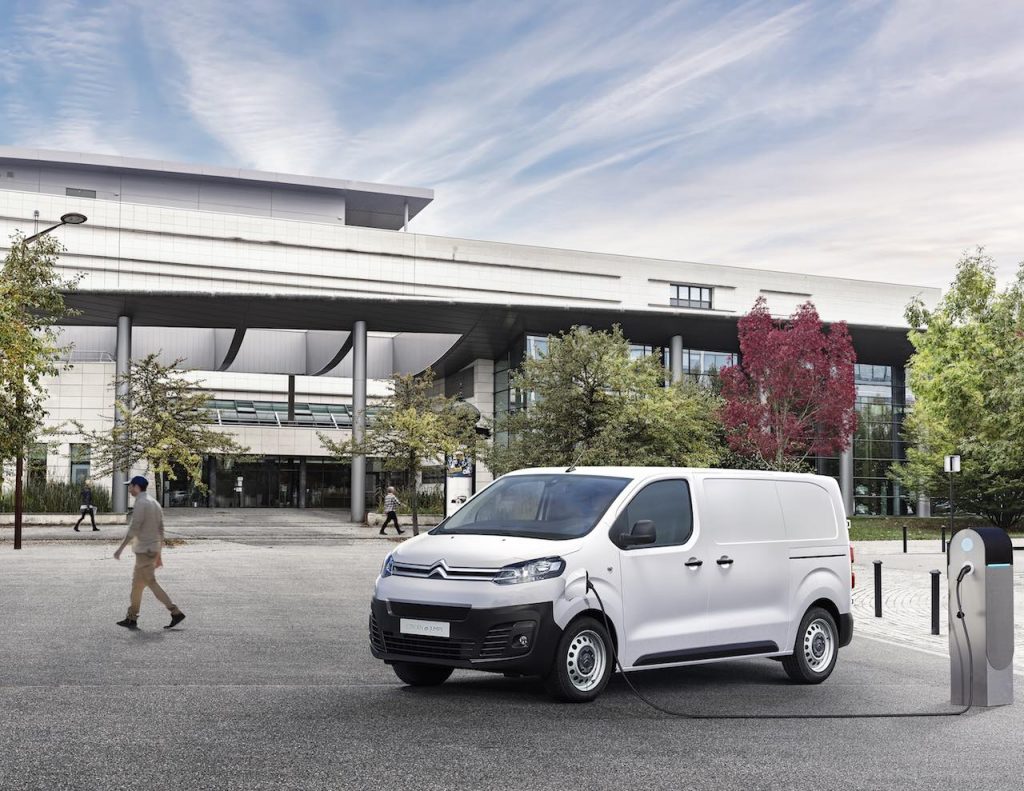
Citroen unveiled the new e-Jumpy (a.k.a. Citroen Dispatch) fully electric van as a part of the brand’s plant to launch 6 electrified models in 2020. Citroen will also be launching a 100% electric version of Jumper at the end of 2020 and the Berlingo Van next year. To arrive in the showrooms in the second half of 2020, the Citroen e-Jumpy will be offered with two battery packs – a 50 kWh battery with a range of 230 km (WLTP) and a 75 kWh battery with 330 km range (WLTP). Citroen is offering an 8 year/160,000 km warranty on the battery. Built on the PSA Group’s EMP2 platform, the e-Jumpy is available in three lengths – XS, M and XL – and the cargo volume ranges from 4.6 cubic metres to 6.6 cubic metres. The all-electric van can carry a payload of up to 1,275 kg.
Driving the front wheels of Citroen e-Jumpy is an electric motor that makes a maximum power of 100 kW (136 hp) and a peak torque of 260 Nm, giving it a top speed of 130 km/h. There are three driving modes available – Eco, Normal and Power. The battery supports DC fast charging up to 100 kW, which can charge it to 80 per cent capacity in 30 minutes (50 kW battery) and in 45 minutes (75 kWh). With a 7.4 kW Wallbox, the battery can be charged to full capacity in around 8 hours.
Inside, the e-Jumpy features a 7-inch touchscreen system that has a new Energy option that shows electric features including the energy flow in real-time, delayed charging, consumption statistics and more. The e-Jumpy also comes with several driver assistance systems including active safety brake, a head-up display, hill start assist, land departure warning, reversing camera with top rear vision, driver attention alert, cruise control speed limiter, coffee break alert, speed limit sign recognition and blind-spot monitoring system.
| Citroen e-Jumpy/Citroen Dispatch spec | Value |
| Battery (kWh) | 50 / 75 |
| Range (km) WLTP | 230 km (50 kWh) / 330 km (75 kWh) |
| Max. power & torque | 100 kW & 260 Nm |
| Maximum speed (km/h) | 130 |
| Cargo volume (cubic metres) | 4.6 – 6.6 |
| Payload (kg) | up to 1275 kg |
| Charging Time (100 kW DC fast charging) | 30 minutes (50kWh) / 45 minutes (75 kWh) |
Mercedes eSprinter
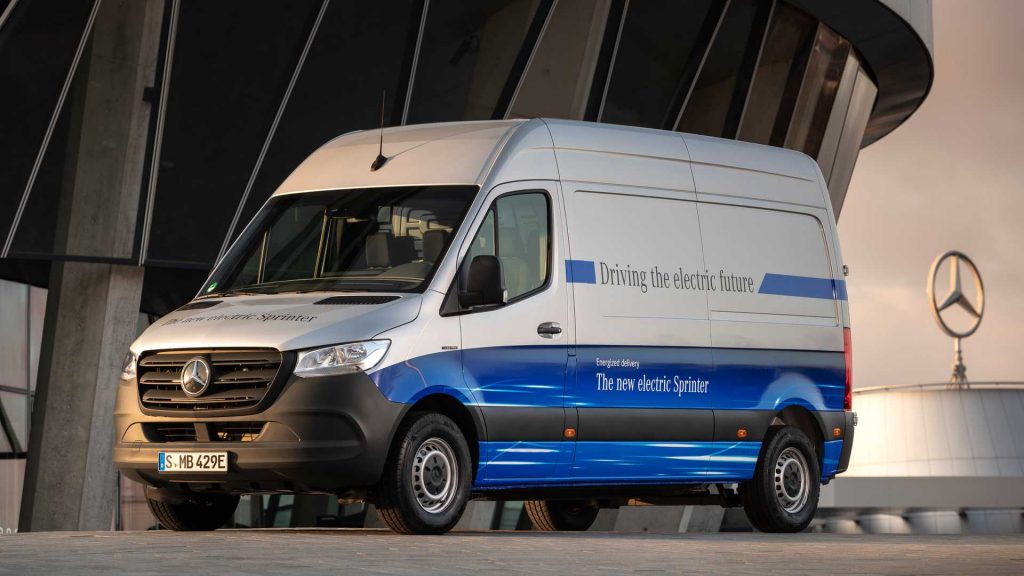
The Mercedes-Benz eSprinter will come in two battery options – the 55 kWh offers a range of 168 km and has a maximum payload of 891 kg while the 41 kWh offers a range of 120 km but has a payload capacity of 1045 kg. The eSprinter makes a maximum power of 85 kW and a peak torque of 295 Nm. The cargo volume remains the same as the regular Sprinter at 10.5 cubic metres. The eSprinter supports quick-charge and the battery can be charged from 10 per cent to 80 per cent in 25 minutes with a 80 kW DC charger. With a regular AC 7.4 kW charger, it takes 8 hours for the 55 kWh battery and 6 hours for the 41 kWh battery to be charged to 100 per cent. The top speed of the electric van can be set in three levels – 80 km/h, 100 km/h or 120 km/h.
The eSprinter comes with three drive modes – E+, E and C that can be used to adjust efficiency or comfort while there are four levels of brake regeneration – D-, D, D+ and D++, which are selected using paddle shifters.
| Mercedes eSprinter specification | Value |
| Installed battery capacity (kWh) | 41/55 |
| Electric range (km) | 120 (41 kWh) / 168 (55 kWh) |
| Max. electric motor output (kW) | 85 |
| Max. rated torque of electric motor (Nm) | 295 |
| Top speed (km/h) | 80 (100; 120) |
| Maximum load capacity (m3) | 11 |
| Payload capacity (kg) | 1045 (41 kWh) / 891 (55 kWh) |
| Max. charging output DC / AC (kW) | 80 / 7.4 |
| Charging time at 7.4 kW AC wallbox (0-100 %) | 8 h (55 kWh), 6 h (41 kWh) |
| Charging time at 80 kW DC rapid charging (10-80 %) | 25 minutes |
Opel Vivaro-e
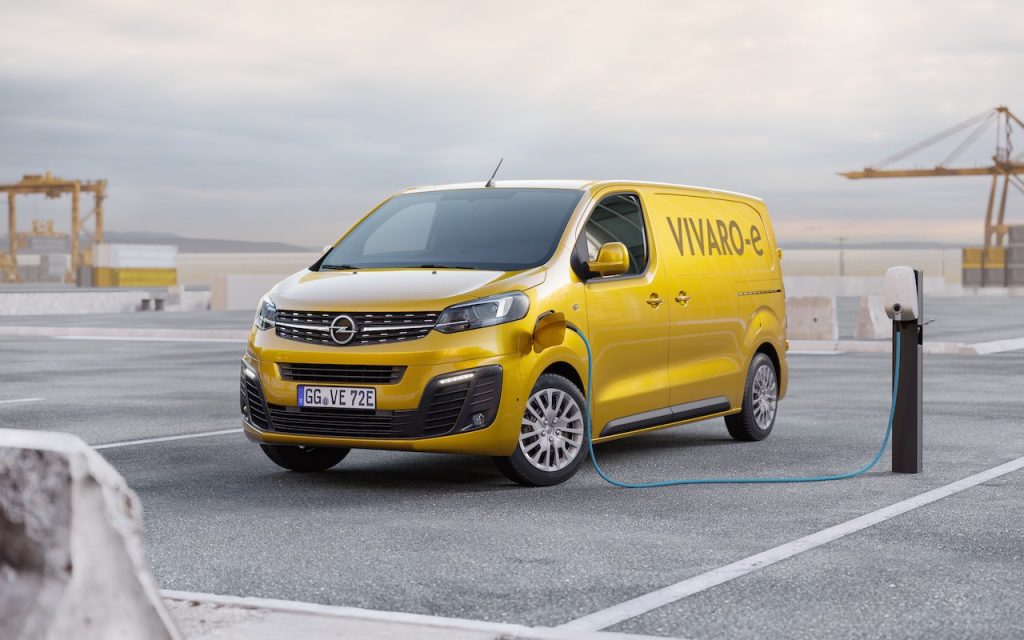
Opel’s first fully electric commercial vehicle, the Vivaro-e, will be available for orders this European summer and the deliveries are planned to start soon after. The Opel Vivaro-e is available in two battery packs with a range of up to 330 km (WLTP) and in three body lengths – S, M and L. The Vivaro-e is also the first e-van to offer an optional trailer hitch from the factory that allows a maximum towing capacity of 1,000 kg.
Inside the Vivaro-e there’s a 7-inch touchscreen infotainment system that offers Apple CarPlay and Android Auto connectivity apart from the Multimedia Navi Pro navigation with 3D view and multimedia radio. A wide range of driver assistance systems is on offer including Head Up Display, Semi-Adaptive Cruise Control, Lane Keep Assist, Drowsiness Alert, Forward Collision Alert, Automatic Emergency Braking and Extended Traffic Sign Recognition.
Customers can also use apps like OpelConnect, myOpel and Free2Move Services to access more features and services. OpelConnect allows to use smartphones as remote control to program AC and charging times and also to check charge status and other information. Customers can use this app to get real time traffic information. With the Free2Move Services, customers will have access to more than 140,000 charging points throughout Europe, including payment. The app also offers suggestions based on the distance to the charging point, charging speed and other details.
| Specification | Opel Vivaro-e |
| Body Length – S/M/L (m) | 4.6 / 4.95 / 5.3 |
| Cargo capacity – S/M/L (cubic metre) | 5.1 / 5.8 / 6.6 |
| Battery capacity (kWh) | 50 & 75 |
| Battery range (km) WLTP | 230 (50 kWh) & 330 (75 kWh) |
| Maximum power (kW) | 100 |
| Maximum torque (Nm) | 260 |
| Maximum speed (km/h) | 130 |
| Charging time 100 kW DC fast charger (80 per cent) | 30 mins (50 kWh) & 45 mins (75 kWh) |
| Battery warranty | 8 year/160,000 km |
Peugeot e-Expert

The Peugeot e-Expert will be going on sale in the second half of 2020 with two battery pack options – 55 kWh with 230 km range and 75 kWh with 330 km range. Based on the EMP2 (Efficient Modular Platform) platform, the e-Expert is available in three body lengths and can take payloads of up to 1,245 kg. Body lengths Compact and Standard can be had with the 50 kWh battery while Standard and Long versions are also available with the 75 kWh battery.
The e-van offers three driving modes – Eco, Normal and Power where the power outputs are 60 kW, 80 kW and 100 kW respectively. In the Power mode, the e-Expert can go from 0 to 100 km/h in 13.1 seconds and achieve a top speed of 130 km/h. There are two braking modes – Moderate and Emphasised, where the Emphasised mode will enable increased deceleration when the accelerator pedal is released. The touchscreen infotainment system comes with MirrorScreen compatibility with Apple CarPlay and Android Auto apart from TomTom Traffic Connected 3D Navigation.
| Peugeot e-Expert | Compact | Standard | Long |
| Overall length (mm) | 4,609 | 4,909 | 5,306 |
| Wheelbase (mm) | 2,925 | 3,275 | 3,275 |
| Cargo volume (cubic metre) | 4.6 | 5.3 | 6.1 |
| Maximum power (kW) | 100 | 100 | 100 |
| Maximum torque (Nm) | 260 | 260 | 260 |
| Maximum speed (km/h) | 130 | 130 | 130 |
| Battery capacity (kWh) | 50 | 50/75 | 50/75 |
| Battery range (km) WLTP | 230 | 230/330 | 230/330 |
| Charging time 7.4 kW Wall Box | 7h 30m | 7h 30m/11h 20m | 7h 30m/11h 20m |
| Charging time 11 kW Wall Box | 5h | 5h/7h 30m | 5h/7h 30m |
| Charging time 100 kW charger | 30m | 30m/45m | 30m/45m |
Fiat Ducato Electric
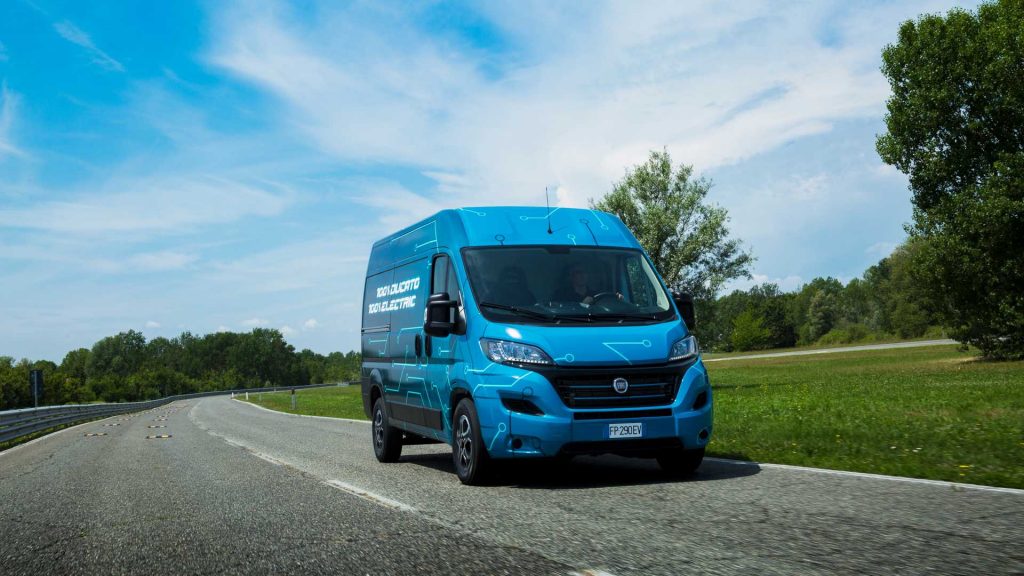
Fiat, which recently merged with PSA, is introducing the electric version of the Ducato this year. Unveiled last July, the Ducato Electric gets battery options for 220 km to 360 km travel range in the NEDC cycle. The electric motor has a peak power of 90 kW, peak torque of 280 Nm and a top speed of 100 km/h. The van will come available in all body types and load volumes of the conventional Ducato – from 10m3 to 17m3, and class-leading payload of up to 1,950 kg. Plans to launch the battery-electric Ducato appear unperturbed by the Coronavirus pandemic.
Ford Transit electric van

Ford has announced that it will be launching the Ford Transit Electric van in the United States and Canada in 2021 as a 2022 model year. Ford has already showcased the electric van covered in camouflage in an event at Amsterdam last year. The electric van will be based on Transit Smart Energy Concept which is a 10-seater passenger version of Transit. The Transit Electric will be offered in several shapes including cargo van, cutaway, and chassis cab. There will also be a choice of three roof heights and three body lengths.
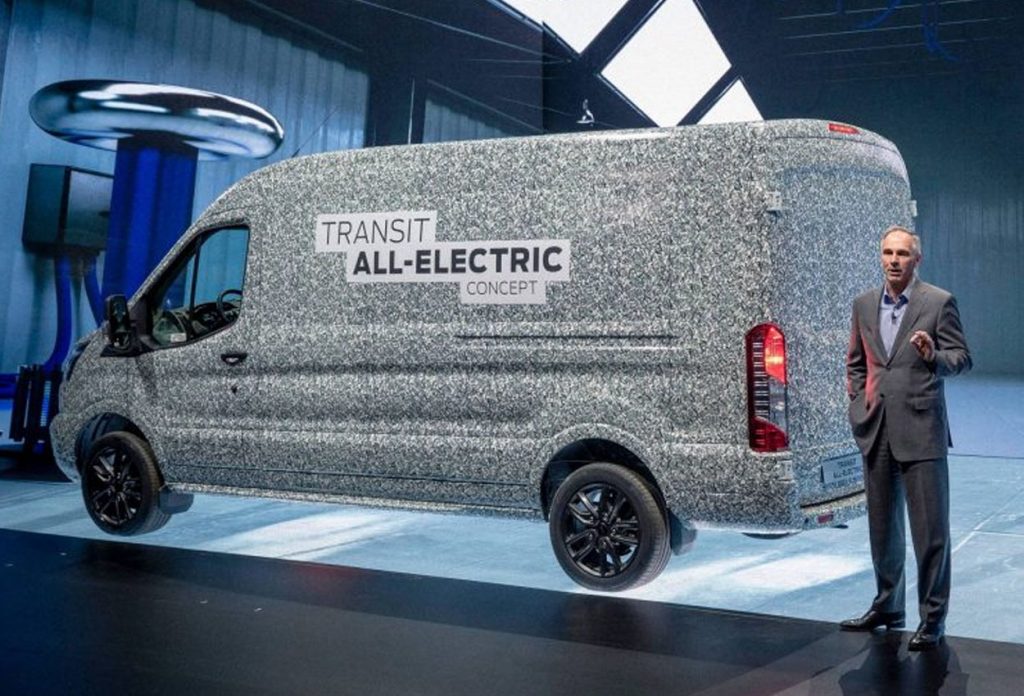
Although no technical details of the electric cargo van have been revealed, we can expect it to get the powertrain of the Smart Energy Concept. That could mean a 55 kWh battery pack with a charging time of four hours and a range of 150 km.
The Ford Transit Electric will be offered with features that include FordPass Connect, forward collision warning, lane-keeping system, pedestrian detection, pre-collision assist with automatic emergency braking, post-collision braking, and auto high-beam headlights. Customers can also use the FordPass Connect to access Ford Data Services and get services like geofencing, live map GPS tracking, vehicle diagnostics, etc.
Toyota Proace Electric
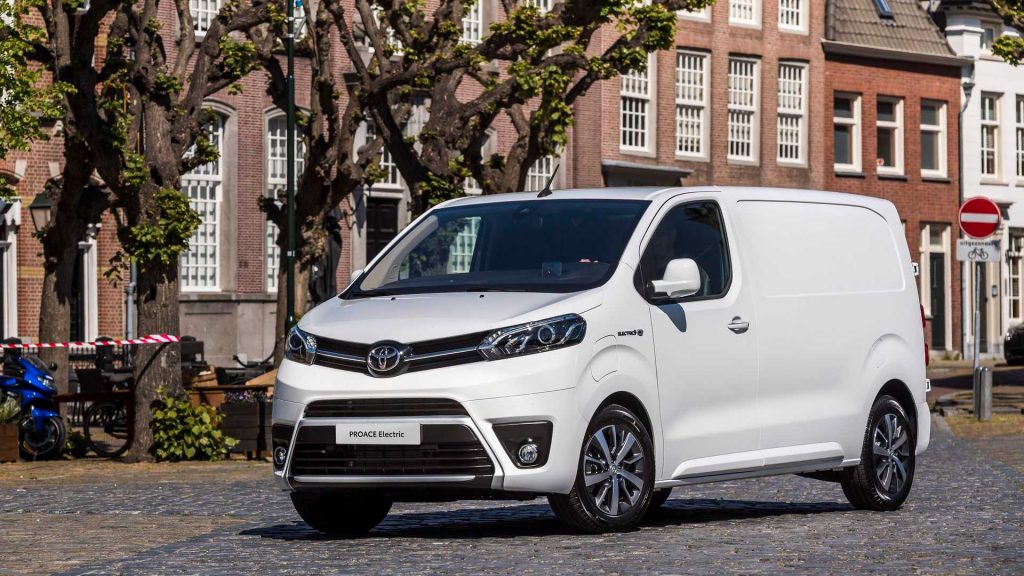
Toyota will be starting the deliveries of its fully-electric Proace delivery van from October 2020 in select European markets. The Proace models are basically rebadged versions of electric vans from PSA group and is based on the latter’s EMP2 multi energy platform.
Just like the Peugeot e-Expert and the Opel Vivaro-e, the Proace electric is available in the same two battery pack options – 50 kWh with the 230 km range and 75 kWh with 330 km range. And there will be three body lengths too like the PSA group vans with different body variants. Maximum payload capacity is 1,275 kg with a cargo volume of up to 6.6 cubic metres. While almost all of the specifications of the Proace electric vans are same as the PSA group’s counterparts, Toyota will be offering an incredible 15 year/1,000,000 km warranty on the battery. It is also reported that Toyota is planning a 9-seater passenger version of the electric van in 2021.
| Specification | Toyota Proace Electric |
| Battery capacity (kWh) | 50 & 75 |
| Battery range (km) WLTP | 230 (50 kWh) & 330 (75 kWh) |
| Maximum power (kW) & Maximum torque (Nm) | 100 & 260 |
| Maximum speed (km/h) | 130 |
| Maximum payload (kg) | 1,275 |
| Maximum cargo volume (cubic metre) | 6.6 |
| Charging time 100 kW DC fast charger (80 per cent) | 30 mins (50 kWh) & 45 mins (75 kWh) |
| Battery warranty | 15 year/1,000,000 km |
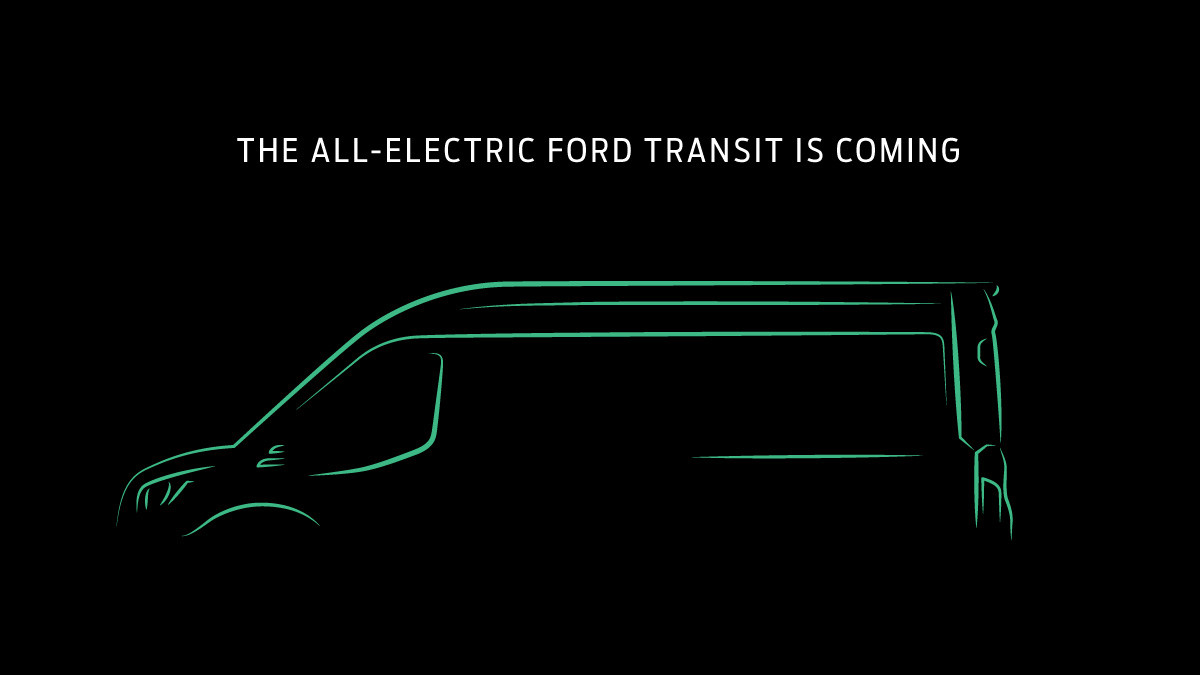
![Compact Hyundai ‘Ioniq 3’ to be produced in Singapore in 2025 [Update]](https://electricvehicleweb.com/wp-content/uploads/2022/01/2025-Hyundai-Ioniq-3-rendering-front-350x220.jpg)
